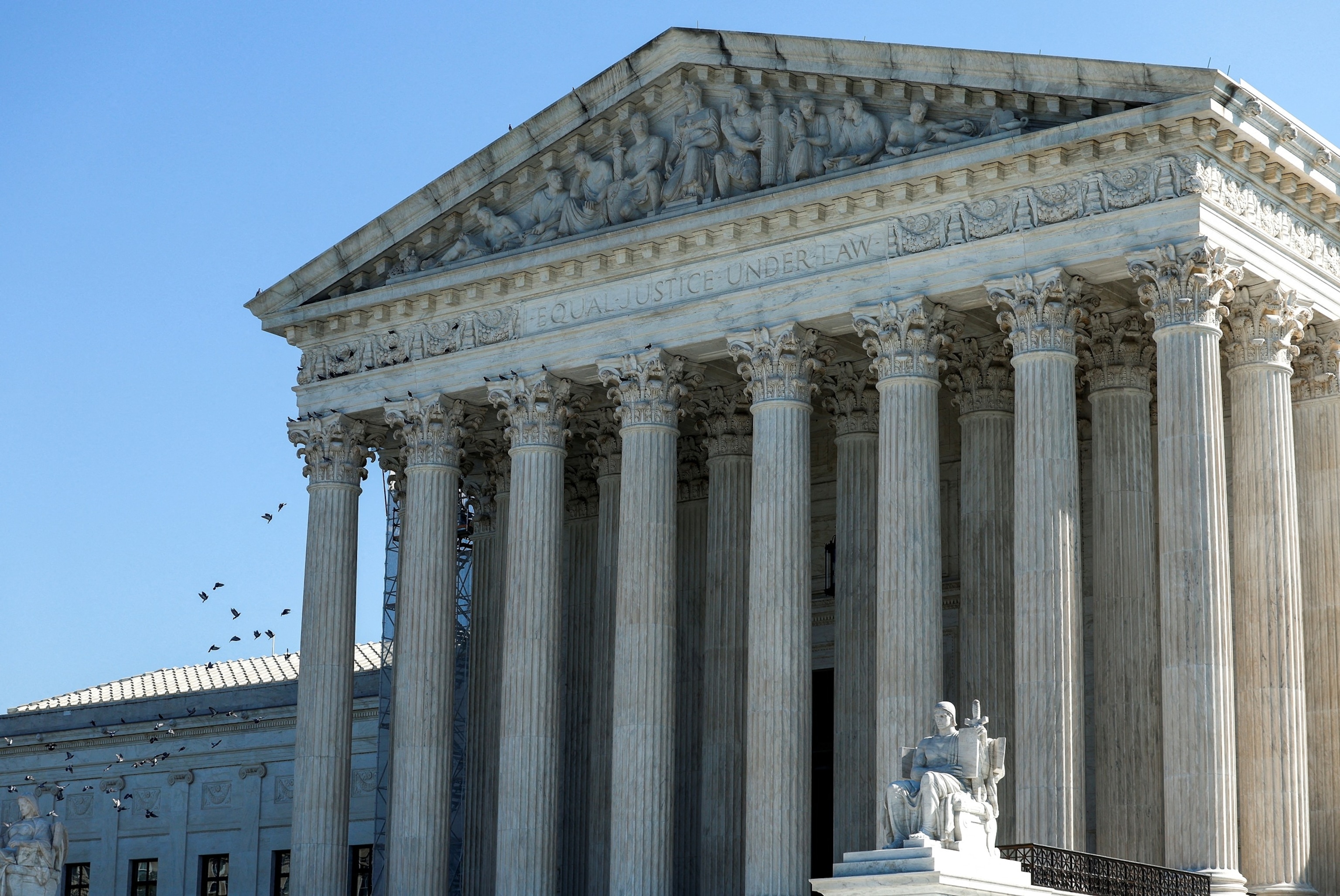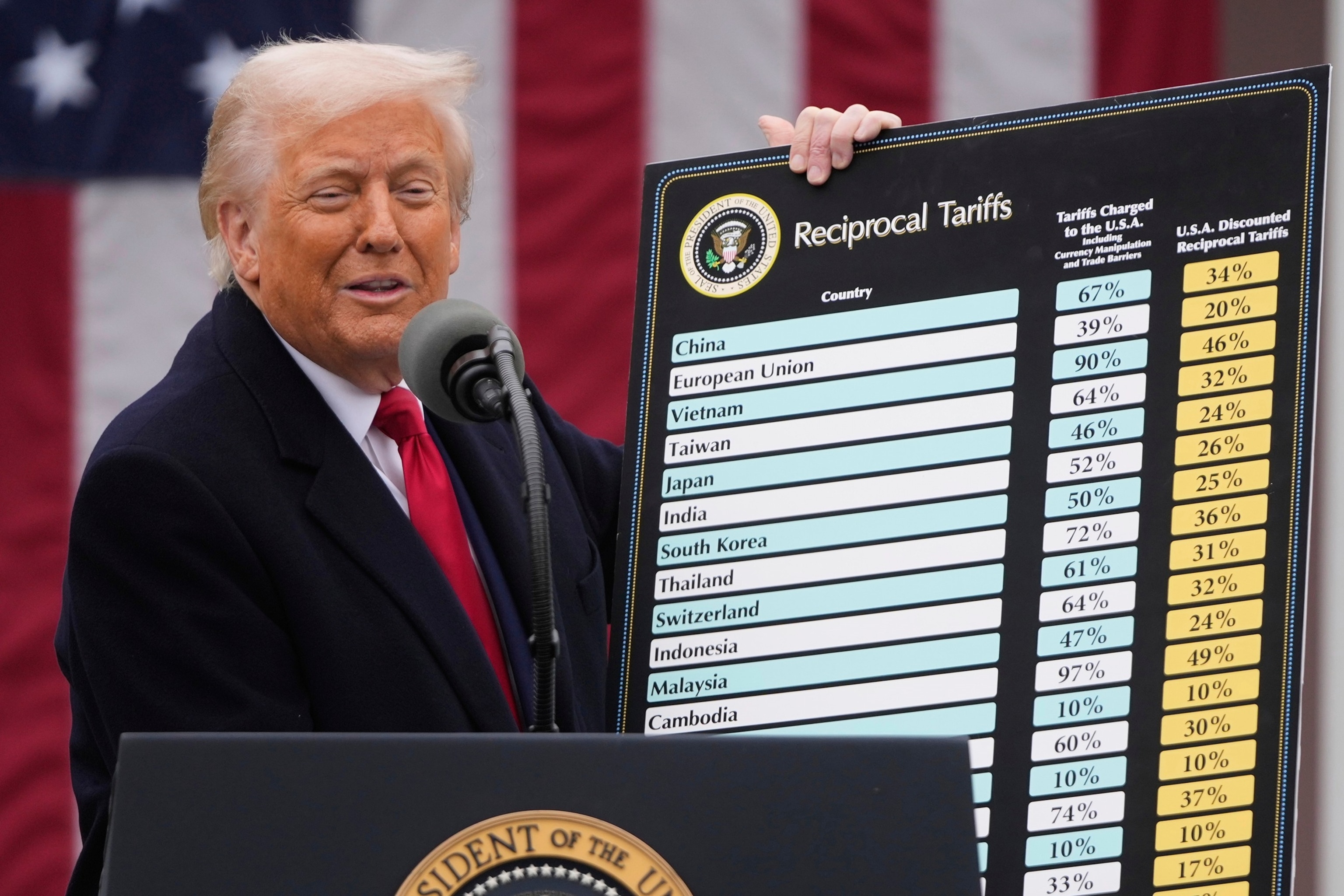In one of the most significant legal cases for President Donald Trump’s administration, the Supreme Court on Wednesday appeared skeptical of the president’s claim of unbounded tariff authority — though some of the justices signaled a potential willingness to give the president some flexibility on foreign trade.
While the Trump administration faced broad skepticism from the court, some of the justices suggested that the president could use tariffs as a tool to regulate trade, rather than generate revenue.
Such a reading of the law at the center of the case could provide Trump an opening — along with other tariffs that have not been challenged in court — to continue his global-trotting mission to reshape trade imbalances, even if the high court curtails his broad tariff power.
“It’s very important that they are regulatory tariffs, not revenue-raising tariffs,” Solicitor General D. John Sauer told the justices. “This policy is by far the most effective if nobody ever pays the tariffs.”
Specifically, Justices Amy Coney Barrett and Justice Neil Gorsuch zeroed in on language in IEEPA that says a president may «regulate importation» in times of emergencies using «licenses, instructions, or otherwise.»
“We’ve been focused on regulating importation, but actually the statute says the President may, by means of licenses or otherwise, regulate importation,” said Gorsuch. “We’ve had some discussion today about the fact that maybe the president could simply recharacterize these tariffs as licenses or rejigger the scheme so that they are licenses.”
Barrett similarly suggested that the Trump administration might be able to reframe the tariffs as licenses to avoid legal scrutiny.

The United States Supreme Court building is seen as in Washington, October 4, 2023.
Evelyn Hockstein/Reuters, Files
“Tell me what the distinction is between licenses and fees if it matters?” she asked. “If there really is no distinction, why couldn’t you just call it a license here?”
Neal Katyal, who argued on behalf of the small business that brought the case, pushed back on the idea that simply rebranding Trump’s tariffs would resolve the legal issue.
“If you were to do that, it’s open-ended,” he said. “It allows, under the word license… to tariff the world.”
Overall, a majority of the justices appeared skeptical of the broad interpretation of the 1977 law governing emergency economic powers that the Trump administration claims provides unlimited tariff power. The International Emergency Economic Powers Act gives Trump the power to “regulate importation” but does not explicitly mention tariffs, and some of the justices expressed concern that the current tariffs amount to a tax on US citizens.
“It’s a congressional power, not a presidential power, to tax. And you want to say tariffs are not taxes, but that’s exactly what they are,” said Justice Sonia Sotomayor.
Popular Reads
Multiple justices also raised concerns that no other president or court has determined that the phrase “regulate importation” confers tariff authority.
“Can you point to any other place in the code — or any other time in history — where that phrase, together, ‘regulate importation’ has been used to confer tariff-imposing authority?” Barrett asked.

President Donald Trump speaks during an event to announce new tariffs in the Rose Garden at the White House, April 2, 2025.
Mark Schiefelbein/AP, FILE
There was no apparent consensus on whether the Court might entirely strike down Trump’s sweeping global tariffs — a centerpiece of his economic agenda — or otherwise clarify limits on his authority in some way; however, several conservative justices indicated a desire to find a way to preserve Trump’s tariff regimen, noting the practical considerations of invalidating it and the traditional deference given to presidents on matters of foreign affairs.
“If you win, tell me how the reimbursement process would work. Would it be a complete mess?” said Justice Amy Coney Barrett.
“It’s difficult, absolutely, we don’t deny that,” Katyal later said.
IEEPA has been used to justify nearly 70% of Trump’s tariffs — including his global reciprocal tariffs and tariffs on China, Canada and Mexico — and has resulted in the collection of more than $89 billion. Depending on the Supreme Court’s decision, that money could be returned to the businesses that have already paid the levy on the goods they imported into the United States.
Even if the court determines that IEEPA does not give unlimited tariff power, the high court could consider defining a much more limited authority that falls within Trump’s power. Barrett and Gorsuch floated the idea of using licenses instead of tariffs or more narrowly tailoring tariffs that seek to regulate, rather than raise funds.
“So revenue-raising tariffs are not foreign affairs, but regulatory tariffs are?” asked Gorsuch
“I don’t think a revenue-raising tariff would be foreign affairs, to the same degree at least. I think it has a foreign application, obviously, but I don’t think it would raise the same issues,” Sauer said.
However, Trump’s own rhetoric might cut against that argument, with the president frequently boasting about the amount of money raised through his tariffs and its impact on the U.S. deficit. On Wednesday, at the same time as the Supreme Court oral arguments, he told business leaders in Florida about “big numbers” generated by his tariffs.
«At the same time, my tariffs are bringing in hundreds of billions of dollars into helping slash the deficit this year by more than 50%. Did you see those numbers? We’re going to be down 50%. Anywhere from 25 to 50, but closer to 50%. Who would think of that one? Those are big numbers,» Trump said.





